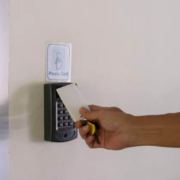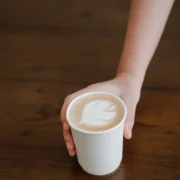In the world of agriculture and land management, controlling vegetation is a crucial task. Uncontrolled growth of weeds, invasive plants, and unwanted vegetation can have a significant impact on the productivity and health of crops, natural ecosystems, and even urban areas. Traditional methods of vegetation control, such as manual weeding or widespread herbicide application, can be time-consuming, labor-intensive, and environmentally harmful.
The Need for Aerial Spot Treatment
In recent years, aerial spot treatment has emerged as an innovative and efficient solution for vegetation control. This method involves using helicopters or drones equipped with specialized spraying equipment to target specific areas with herbicides or other control agents. Aerial spot treatment offers several advantages over traditional methods:
- Precision: By precisely targeting specific areas, aerial spot treatment minimizes the use of herbicides and reduces the risk of unintended damage to non-target plants or sensitive ecosystems. This targeted approach ensures maximum effectiveness while minimizing environmental impact.
- Efficiency: Aerial spot treatment allows for faster and more efficient vegetation control compared to manual weeding or ground-based spraying. Helicopters or drones can cover large areas in a relatively short period, saving time and labor costs.
- Accessibility: In areas with challenging terrain or limited access, such as steep slopes, wetlands, or dense forests, aerial spot treatment provides a practical solution. Helicopters and drones can reach remote or hard-to-reach locations, ensuring comprehensive vegetation control.
The Process of Aerial Spot Treatment
Aerial spot treatment involves a systematic approach to ensure effective vegetation control. Here are the key steps:
- Assessment: Before initiating aerial spot treatment, a thorough assessment of the target area is conducted. This includes identifying the types of vegetation, determining the extent of the problem, and evaluating any potential risks or constraints.
- Planning: Based on the assessment, a detailed treatment plan is developed. This includes selecting the appropriate herbicides or control agents, determining the optimal timing and dosage, and planning the flight path for the aerial application.
- Application: Using helicopters or drones equipped with specialized spraying equipment, the selected herbicides or control agents are applied to the target areas. The aerial application ensures precise coverage and distribution, maximizing the effectiveness of the treatment.
- Monitoring: After the aerial spot treatment, regular monitoring is essential to assess the outcomes and make any necessary adjustments. This includes evaluating the effectiveness of the treatment, monitoring for any signs of re-growth or new invasions, and documenting the overall impact on vegetation control.
Case Studies and Success Stories
The effectiveness of aerial spot treatment has been demonstrated in various case studies and success stories. Here are a few examples:
- Agricultural Applications: Aerial spot treatment has been widely used in agricultural settings to control weeds and increase crop yields. By targeting specific areas of weed infestation, farmers have been able to reduce herbicide use and improve overall crop health.
- Ecological Restoration: In natural ecosystems, aerial spot treatment has proven effective in controlling invasive plant species and restoring native vegetation. By selectively targeting invasive plants, the biodiversity and ecological balance of these areas can be restored.
- Urban Vegetation Management: Aerial spot treatment has also been used in urban areas to control unwanted vegetation in parks, roadside areas, and other public spaces. This approach minimizes the need for manual labor and reduces the use of herbicides in densely populated areas.
Conclusion
Aerial spot treatment offers a targeted, efficient, and environmentally friendly solution for vegetation control. With its precision, efficiency, and accessibility, this innovative method has the potential to revolutionize the way we manage vegetation in agriculture, natural ecosystems, and urban areas. By embracing aerial spot treatment, we can achieve effective vegetation control while minimizing the impact on the environment and maximizing productivity.











Comments